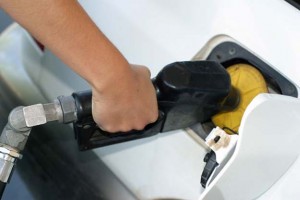Smaller vehicles and new technology — as well as changing driving habits — have combined to reduce the fuel consumption of American drivers of light-duty vehicles by 11% since 2004, says a University of Michigan researcher.
In a follow-up to two reports released earlier this year, Michael Sivak, of the University of Michigan Transportation Research Institute, or UMTRI, examined recent trends in fuel consumption by cars, pickup trucks, SUVs and vans in the U.S. fleet from 1984 to 2011.
“The decline of 11% since 2004 reflects the decline in distance driven and the improvement in vehicle fuel economy,” said Sivak, a research professor at UMTRI and director of the Sustainable Worldwide Transportation research consortium.
Over the past decade, new vehicles in every market segment have become steadily more fuel efficient. In addition, the increasing number of hybrids, diesel- and battery-powered vehicles are also helping to reduce fuel consumption, carmakers have noted. Rising gasoline prices have sparked broader interest in fuel economy – and encouraged motorists to combine chores and take other steps to reduce driving.
(Hyundai now one of three automakers planning to unveil hydrogen cars at LA Auto Show. Click Here for more.)
The findings of the UMTRI study show that 123.9 billion gallons of gasoline were consumed in 2011, compared with a peak of 138.8 billion gallons in 2004. During the five-year period of 2002 through 2006, U.S. drivers used an average of 135.5 billion gallons of gas annually, but from 2007 to 2011, the average dropped to 123 billion gallons.
In addition to total fuel consumption, Sivak examined fuel-consumption rates per person, per licensed driver, per household and per registered vehicle. He found that all four rates were 13-to-17 percent lower in 2011 than during the peak year of 2004.
(VW has two energy-efficient battery cars debuting at LA Auto Show. Click Here to check them out.)
Annual fuel-consumption rates for 2011 were 398 gallons per person, 585 gallons per licensed driver, 1,033 gallons per household and 530 gallons per registered vehicle.
Given that these reductions started to occur several years prior to the onset of the current economic downturn, Sivak thinks that fuel consumption won’t significantly rebound in the years ahead.
(Lightweight Chevy Silverado concept could boost mileage – and performance. Click Here to check out the Chevrolet Cheyenne.)
Sivak’s two earlier studies found that the number of registered light-duty vehicles in the U.S. fleet reached a maximum in 2008, while the total distance driven peaked in 2006. Although economic factors have likely contributed to declining rates of light-duty vehicles per person, per licensed driver and per household since the economic downturn of 2008, other societal changes have influenced the need for vehicles. With increased telecommuting and use of public transportation, and with more people living in cities, the number of carless households has dropped.
“The combined evidence from this and the previous two studies indicates that—per person, per driver and per household—we now have fewer light-duty vehicles, we drive each of them less and we consume less fuel than in the past,” Sivak said. “Fuel-consumption rates are now lower than they were in 1984—the first year of my analysis.”

